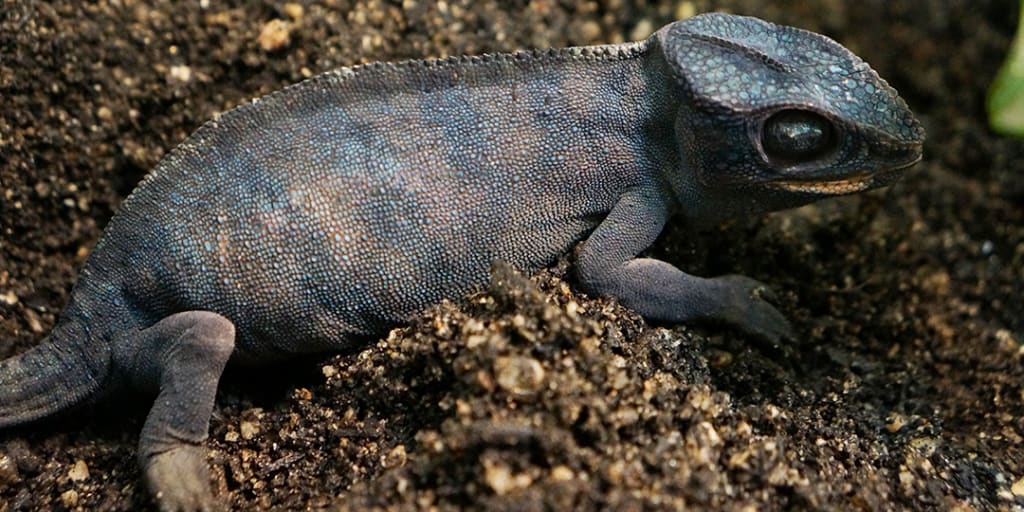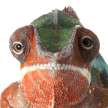The Evolutionary Puzzle of Chameleons' Viviparity
Unraveling the Enigma

Chameleons, the charismatic reptiles renowned for their remarkable camouflage and unique physical adaptations, continue to intrigue scientists and nature enthusiasts alike. One of the most captivating aspects of chameleon biology is their reproductive strategy. Unlike most reptiles, chameleons do not lay eggs; instead, they give birth to live young. The evolutionary origins of this intriguing adaptation have puzzled researchers for years.
In this article, we will delve deeper into the evolutionary puzzle of chameleons' viviparity and explore the various theories proposed to unravel this enigma.
The Arboreal Advantage
Chameleons are primarily arboreal creatures, spending their lives in the tree canopies of diverse ecosystems. The transition to viviparity may have provided them with a unique advantage in these specialized habitats.
One theory suggests that by giving birth to live young, chameleons eliminate the vulnerability associated with eggs. Arboreal environments pose significant risks for eggs, including predation, exposure to harsh weather conditions, and the challenge of finding suitable nesting sites. By carrying their young within their bodies, chameleons provide a safer environment, reducing the risks and increasing the chances of their offspring's survival.
The arboreal advantage hypothesis also highlights the importance of mobility. Arboreal species face different challenges compared to their terrestrial counterparts, such as limited space, complex microhabitats, and the need to navigate among branches and foliage. By transitioning to viviparity, chameleons can give birth to fully formed offspring, allowing them to be more mobile and immediately adapt to their arboreal surroundings.
Environmental Constraints
The diverse habitats that chameleons inhabit present a range of environmental conditions, including fluctuating temperatures and variable humidity levels. These factors may have influenced the evolution of viviparity in chameleons.
Egg-laying reptiles rely on external heat sources, such as the sun, to incubate their eggs. However, in fluctuating environments, maintaining stable incubation temperatures can be challenging. Viviparity in chameleons allows for internal gestation, providing a more controlled and regulated environment for the developing embryos. This ensures optimal conditions for their growth and development, increasing the chances of successful reproduction.
Furthermore, the unique physiological adaptations associated with viviparity in chameleons allow them to adjust their reproductive strategy to different environmental conditions. In cooler climates, chameleons may extend the gestation period to provide a longer period of development, while in warmer regions, they may shorten it to minimize the risk of overheating. This flexibility in reproductive timing enables chameleons to adapt to a wide range of habitats.
Predator Protection
Predation is a significant threat to eggs and vulnerable young in many reptile species. By transitioning to viviparity, chameleons may have gained an advantage in protecting their offspring from predators.
Giving birth to live young allows chameleons to reduce the risk of predation during critical early stages of development. Instead of laying eggs that would be susceptible to predation, chameleons carry their embryos within their bodies, providing a higher level of protection. This adaptive strategy increases the chances of offspring survival, as they are less exposed and more capable of escaping potential predators.
See the “Chameleon Care Guide” for a detailed explanation of all you need to know about this.
Reproductive Success
Viviparity in chameleons offers potential advantages in terms of reproductive success and offspring quality. By producing fewer but larger offspring, chameleons can invest more resources into each individual, increasing their chances of survival and overall reproductive fitness.
Viviparity also allows for internal fertilization, providing chameleons with greater control over mating opportunities. Females can store sperm from multiple matings and choose when to fertilize their eggs, ensuring optimal timing for successful reproduction. This control over reproductive processes may enhance the quality of offspring and increase the chances of successful genetic transmission.
Suggested Read: Discover What You Really Need to Know to Raise a Happy, Healthy Pet Chameleon! And Avoid The No.1 Cause Of Death of Chameleons in Captivity... Here's Your Chance to Find Out.
Conclusion
The evolutionary puzzle of chameleons' viviparity continues to captivate scientists, offering insights into the complex interactions between reproductive strategies, ecological niches, and environmental conditions. The arboreal advantage, environmental constraints, predator protection, and reproductive success are all potential factors that have influenced the transition from egg-laying to viviparity in chameleons.
By giving birth to live young, chameleons provide a safer and more controlled environment for their offspring, increasing their chances of survival in arboreal habitats. The ability to adjust reproductive timing and invest more resources into each individual offspring contributes to their reproductive success.
While significant progress has been made in understanding the evolutionary origins of chameleons' viviparity, there is still much to explore. Future research may involve investigating the genetic and physiological mechanisms that underlie this adaptation, as well as exploring the ecological factors that have shaped chameleon reproduction.
Unraveling the enigma of chameleons' viviparity not only enhances our understanding of these fascinating creatures but also sheds light on the diversity and complexity of reproductive strategies across the animal kingdom. As researchers continue to delve into this captivating field, chameleons will undoubtedly remain a source of awe and inspiration for nature enthusiasts and scientists alike.
Disclosure
“We are a participant in the Clickbank Affiliate Program, an affiliate advertising program designed to provide a means for us to earn fees by linking to Clickbank.com and affiliated sites at no extra cost to you.”
About the Creator
Chameleon Care Secrets
Chameleon Care Secrets reveals the hidden knowledge behind successfully caring for chameleons. Discover expert tips, husbandry secrets, and essential techniques to ensure your chameleons thrive in their habitats.






Comments
There are no comments for this story
Be the first to respond and start the conversation.